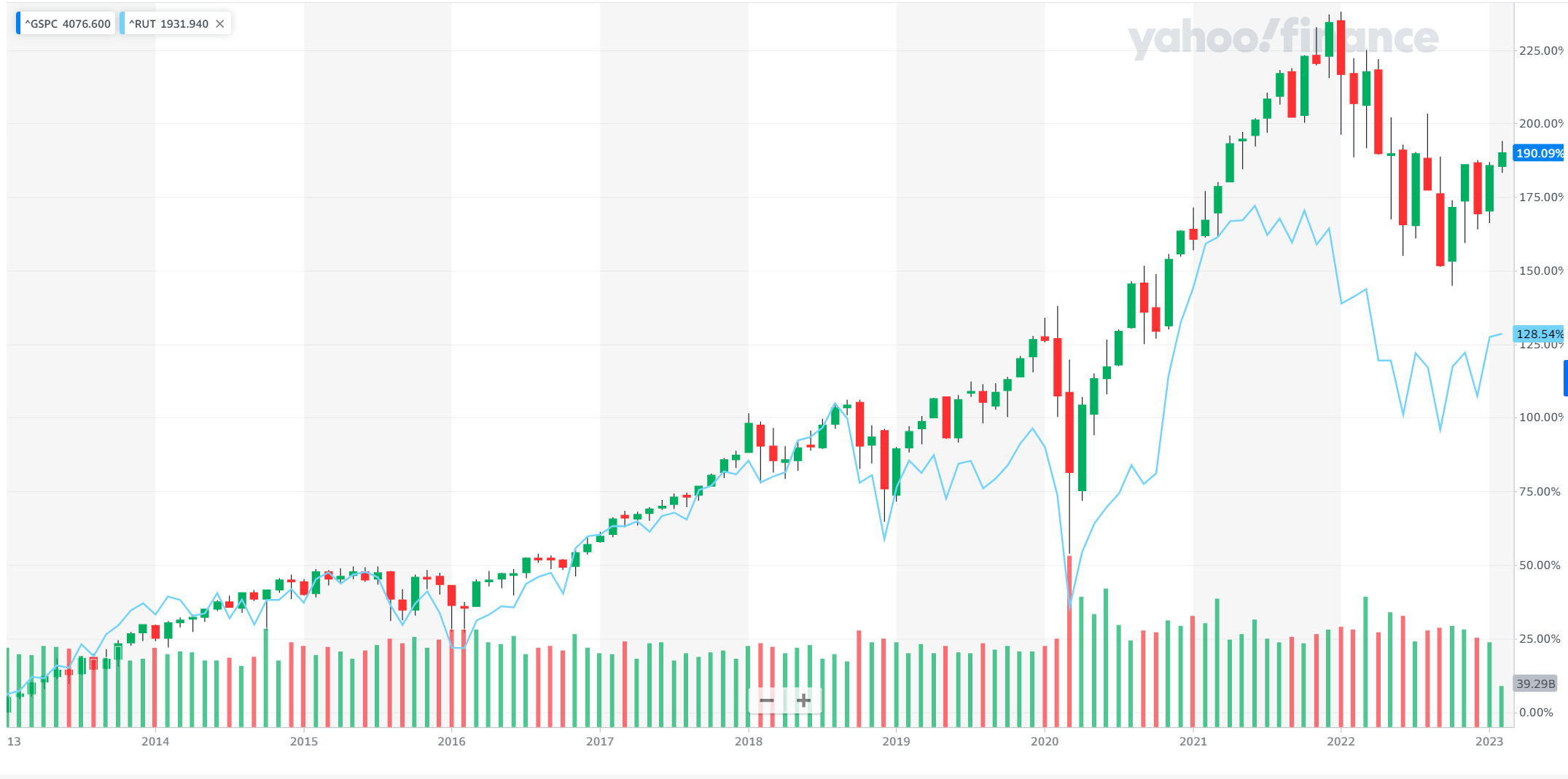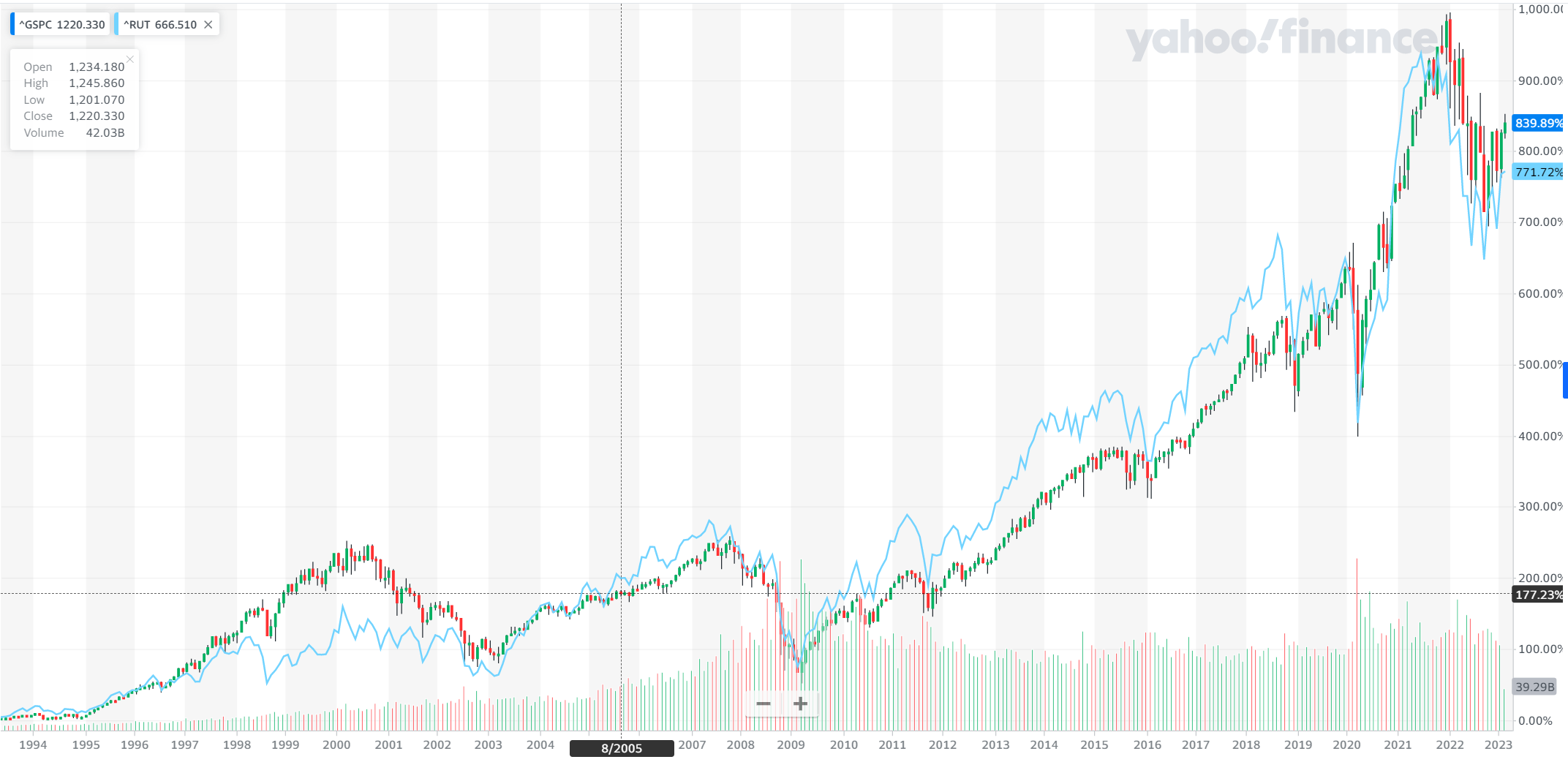Small-Cap or Large-Cap: Which is Better Investment


If you have ever taken courses in finance, you probably remember the term CAPM — Capital Asset Pricing Model. The model calculates the expected rate of return for an asset or investment and as a rule, higher EXPECTED returns are ASSOCIATED with higher anticipated risks/volatility.
Now, EXPECTED and ASSOCIATED are capitalized for a reason. In other words — if an investor wants to receive higher expected returns, the investor needs to create a portfolio that is deemed riskier from the perspective of the markets.
If we were to rank assets from the least risky to the riskiest, the ranking would be like that: government bonds, investment-grade corporate bonds, high-yield corporate bonds, large-cap stocks, small-cap stocks, etc.
Аre small-cap stocks riskier than large-cap ones?
Two asset classes hold our attention, and we want to point your attention to them — large-cap and small-cap stocks.
The first question we want to answer — are small-cap indeed riskier than large-cap stocks. As a proxy for large-cap stocks, we will use S&P500, and for small-cap stocks — Russell 2000 indexes (and their ETFs – SPY and IWM, respectively).
According to AlphaQuery.com, the average 180-day IWM realized volatility has been around 20% and at present is at 26.33%. According to the same source, the average 180-day realized volatility for SPY has been about 15%; at present, it is 23.12%.
So, looking at the results above, we can conclusively answer our question. Yes, small-cap stocks are riskier than large-cap stocks as they exhibit higher volatility daily. If this is the case, according to CAPM, one would expect small-cap stocks to offer higher returns to investors. Let’s see if that is the case:

S&P500 vs. Russell 2000 historical performance
Surprisingly, for the last ten years, the S&P500 has returned without dividends, 190%, while at the same time, the Russell 2000 has returned 128.50%. Since the dividend yield for S&P500 is higher than that of Russell 2000, if dividends are calculated, the outperformance of the S&P500 will be even higher.

While on a 30-year basis, the outperformance of the S&P500 relative to Russell 2000 is not that much, it is still there! S&P500, without dividends, has returned 840%, while the Russell 2000 has yielded only 770% without dividends for the same period.
In the CAPM world, there is a term for such underperformance — inefficient portfolio. Small-cap stocks have underperformed large-cap stocks, and this underperformance is evident not only on a risk-adjusted basis but even on an absolute basis.
So, small stocks HAVE underperformed, but the question is whether we can expect this underperformance to continue.
S&P500 vs. Russell 2000 P/E Ratios
Let’s look at historical forward P/E Ratios for both indexes. Let’s start with S&P500 — according to Yardeni Research, the S&P500 forward P/E Ratio is currently at 18.3. The current reading represents a long-term average for that statistic. The last 25-year range has been between 11 and 23.
According to the same source, the forward P/E Ratio for Russell 2000 is currently sitting at 23.4, which is very much in line with historical averages. It is undoubtedly ABOVE the level of 15—16 that was associated with the 2008 Global Financial Crisis.
In conclusion, small-cap stock indexes like Russell 2000 have historically underperformed large-cap indexes like S&P500.
Key Takeaway
Despite this historically significant underperformance, small-cap stock indexes continue to be priced similarly to large-cap indexes, and their respective P/E ratios tend to move likewise. Not only that, but the Russell 2000 P/E Ratio continues to trade at a premium of 30% to that of the S&P500 P/E Ratio.
In our opinion, this premium is TOO HIGH, does NOT seem justified by long-term absolute returns, and hence we will avoid the small-cap sector ENTIRELY.
Sources:
Disclaimer:
